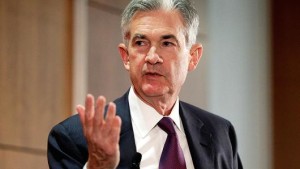The Federal Reserve sent a stark message Wednesday: The economy is slowing. And it won’t be raising interest rates anytime soon.
The Fed left its key short-term rate unchanged and projected no rate hikes this year, reflecting a dimmer view of the economy as growth weakens in the United States and abroad.
The central bank said it was keeping its benchmark rate – which can influence everything from mortgages to credit cards to home equity lines of credit – in a range of 2.25 percent to 2.5 percent. It also announced that by September, it will no longer reduce its bond portfolio, a change intended to help keep long-term loan rates down.
Combined, the moves signal no major increases in borrowing rates for consumers and businesses. And together with the Fed’s dimmer forecast for growth this year – 2.1 percent, down from a previous projection of 2.3 percent – the statement it issued after its latest policy meeting suggests it’s grown more concerned about the economy. What’s more, with inflation remaining mild, the Fed feels no pressure to tighten credit.
In predicting no rate increases for 2019, the Fed’s policymakers reduced their forecast from two that were previously predicted in December. They now project one rate hike in 2020 and none in 2021. The Fed had raised rates four times last year and a total of nine times since 2015.
The central bank’s theme, in its statement and in a news conference by Chairman Jerome Powell, is that it will remain continually “patient” about pursuing any further rate hikes. In his news conference, Powell used some version of the word “patient” no fewer than 10 times.
Stock market indexes initially rallied on the news, but the gains soon faded and many stocks finished the day down. The Dow Jones Industrial Average lost 141 points, or 0.5 percent. Analysts said the Fed’s downgraded outlook for the economy might have alarmed investors.
“We think the Fed’s forecasts are still too upbeat,” said Michael Pearce, senior U.S. economist at Capital Economics, saying he thinks sluggish growth will lead the Fed to start cutting rates early next year.
The Fed’s decision was approved on an 11-0 vote.
The Fed also spelled out a plan for stemming the reduction of its balance sheet: In May, it will slow its monthly reductions in Treasury bonds from $30 billion to $15 billion and end the runoff altogether in September. Starting in October, the Fed will shift its runoff of mortgage bonds into Treasurys so its overall balance sheet won’t drop further.
The central bank had aggressively bought mortgage and Treasury bonds after the 2008 financial crisis to help cut borrowing rates, spur lending and stimulate growth. With the economy now much stronger, the Fed has been gradually shrinking its bond portfolio. But now it’s prepared to slow and then stop that process to avoid putting upward pressure on loan rates.







